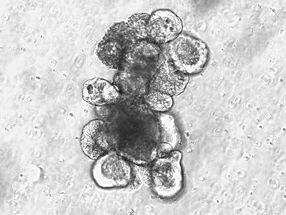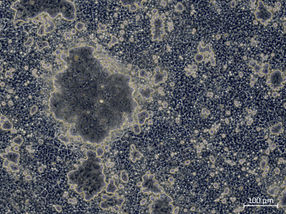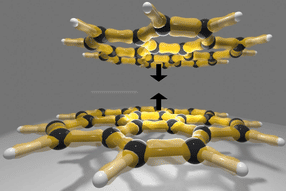Detection of a new blood pressure-increasing hormone
Anzeigen
A study group headed by Charité scientists has detected a new Hormone that constricts the blood vessels, thus increasing blood pressure. In the latest issue of Nature Medicine the researchers reported the hormone to be the nucleotide "urine adenosine tetraphosphate" (Up4A). They found that Up4A is produced by the endothelial cells, the inner cells of the blood vessel wall, and released into the blood, where it affects the muscle cells of the vessel wall and causes contractions. Constriction of the muscle cells triggers constriction of the vessel walls, which leads to a rise in blood pressure.
"The blood pressure in rats increased by 30% over the long term after injecting Up4A into the animals", reported biochemist Joachim Jankowski. "This hormone may be responsible for pathologically high blood pressure", added Prof. Walter Zidek, director of the department.
Clinical studies are underway to test whether the hormone concentration in hypertensive patients is pathologically high. At the same time, the researchers want to develop an antagonist hormone in the lab, which will counteract vasoconstriction.
Meistgelesene News
Weitere News aus dem Ressort Wissenschaft

Holen Sie sich die Life-Science-Branche in Ihren Posteingang
Mit dem Absenden des Formulars willigen Sie ein, dass Ihnen die LUMITOS AG den oder die oben ausgewählten Newsletter per E-Mail zusendet. Ihre Daten werden nicht an Dritte weitergegeben. Die Speicherung und Verarbeitung Ihrer Daten durch die LUMITOS AG erfolgt auf Basis unserer Datenschutzerklärung. LUMITOS darf Sie zum Zwecke der Werbung oder der Markt- und Meinungsforschung per E-Mail kontaktieren. Ihre Einwilligung können Sie jederzeit ohne Angabe von Gründen gegenüber der LUMITOS AG, Ernst-Augustin-Str. 2, 12489 Berlin oder per E-Mail unter widerruf@lumitos.com mit Wirkung für die Zukunft widerrufen. Zudem ist in jeder E-Mail ein Link zur Abbestellung des entsprechenden Newsletters enthalten.
























































